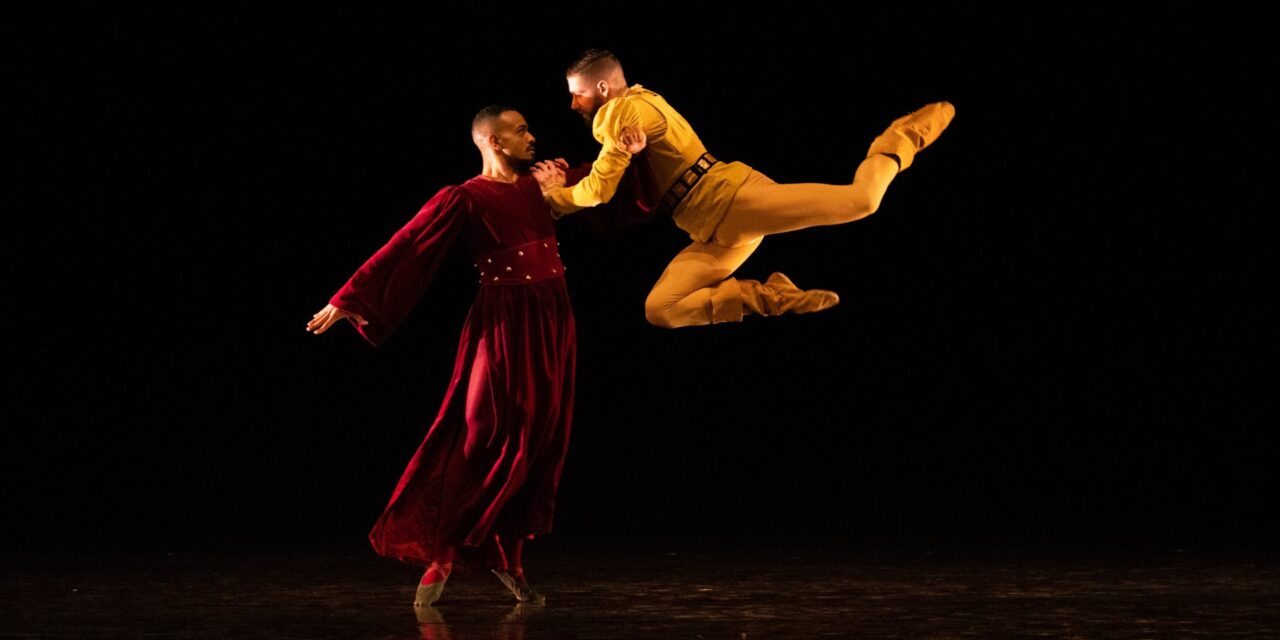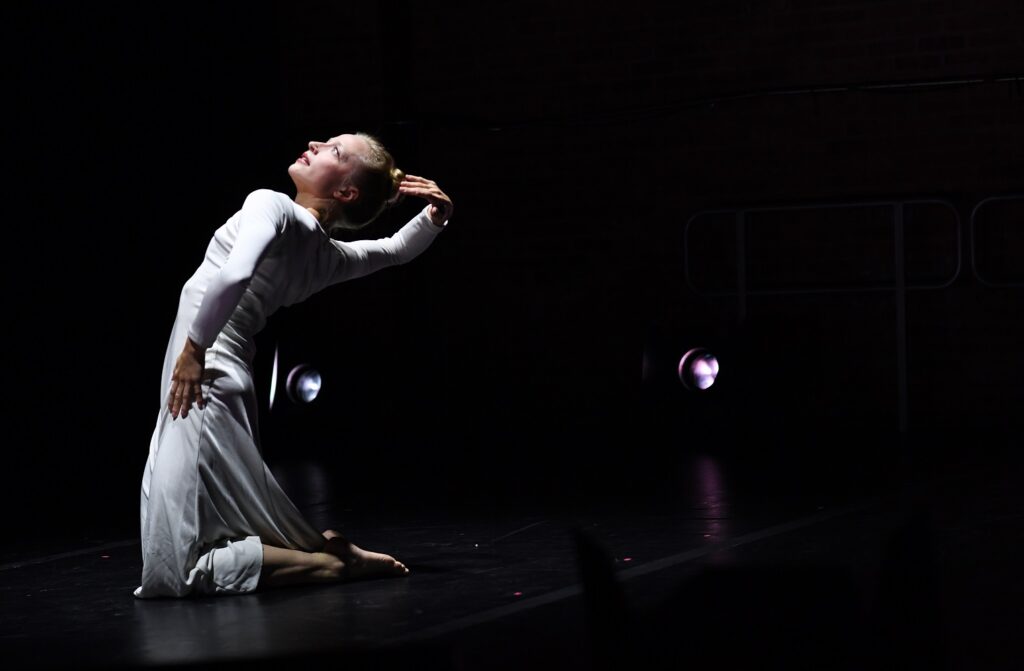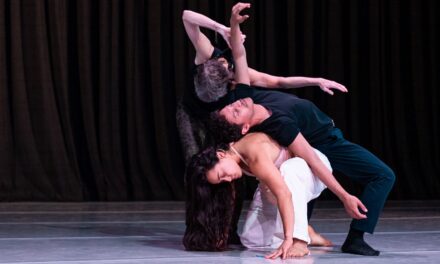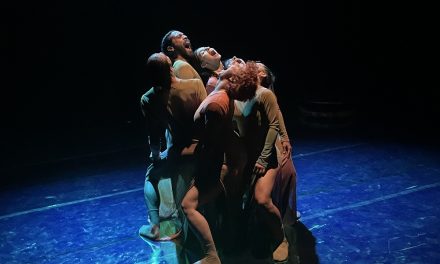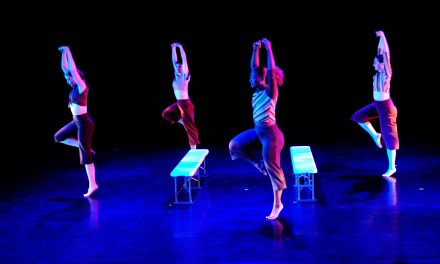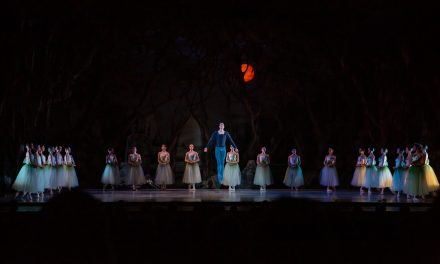The Limón Dance Company has been at the forefront of modern dance since 1946. The first dance group to internationally tour under the State Department and the first modern dance company to perform at New York’s Lincoln Center, 62 years after its inception, in 2008 The Jose Limón Dance Foundation received the National Medal of the Arts. Mr. Limón leaves a legacy of “social awareness, which transcended individual groups to explore our shared search for common ground…”. His works continue to be commissioned by international voices. Today, 53 years after his passing, the relevance and importance of his work in today’s world cannot be denied.
The program opened with Orfeo, a story of love and loss. In this age of dance presentations that are often characterized by elaborate set design, costumes and lighting, flips, partnering tricks, more turns than one can imagine, and athleticism that appears to be humanly impossible, I found myself hypnotized by these dancers telling a story through movement void of all the aforementioned. The audience seemed to be hypnotized too as we all sat quietly watching closely as the story unfolded. Costumes were simple unitards with pieces of fabric attached and a diaphanous gauze that served as a veil over Mariah Gravelin, Eurydice. The costumes highlighted the beautiful curves and angles the dancers created with their bodies and as the duet progressed the profound sense of love, then desperation, and finally loss brought the dance to a close. The program provided notes, but I did not need them to understand the story that was being told. The dancers, through nuance, and movement connected deeply to emotions, exquisitely told the story.
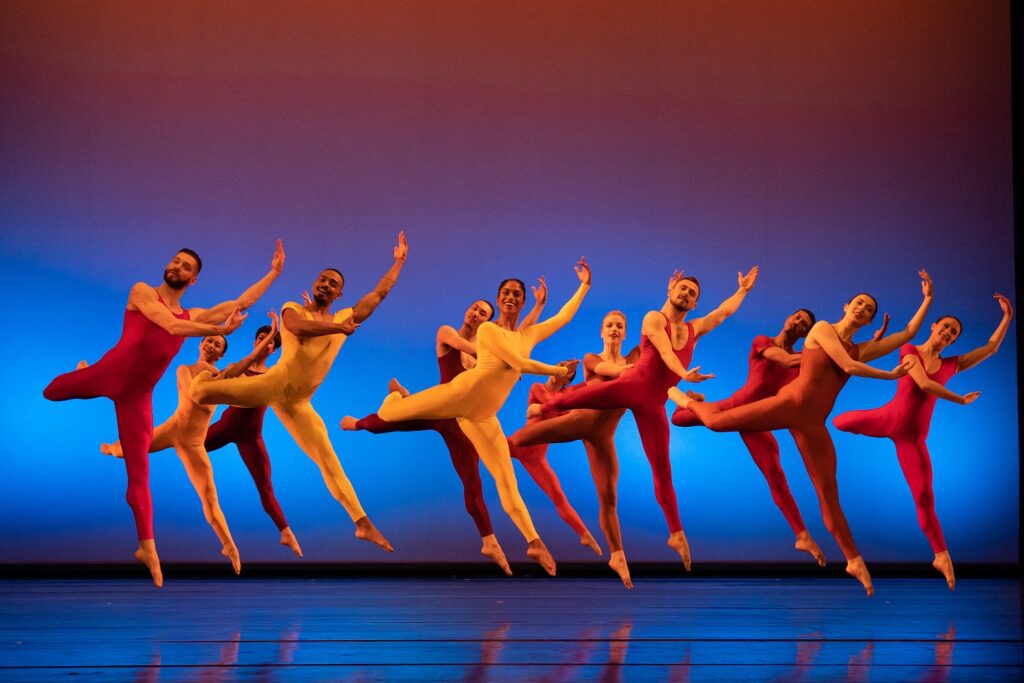
The Limón Dance Company in “A Choreograpic Offering” choreography by José Limón – Photo by Allison Armfield.
Suite From A Choreographic Offering brought a totally different energy to the stage. Set to Johann Sebastian Bach’s Musical Offering, a collection of keyboard canons and fugues all based on a single musical theme given to Bach by Frederick the Great (King Frederick II of Prussia), it is a series of variations, paraphrases and motifs from longtime colleague, Doris Humphrey’s dances. The dancers, costumed in colorful unitards that enable the audience to see every single muscle, never seem to stop moving. From solo to duet, to solo with quartet to septet they execute interesting movement combinations that seem to be seamlessly connected. Arms and hands form curved lines that frame the movement phrases, jumps, turns, and brief balances. The group sections are breath taking as they are performed in perfect unison. Clean, clean, clean!!!!!!! The dancers move as one and it took my breath away. The manner in which the dancers perform attitude turns and jumps is unique in that the leg in attitude appears to reach around and create a perfect curve that is identical for each dancer. This company moves as one, interpreting the music and movement together when they are working in unison.
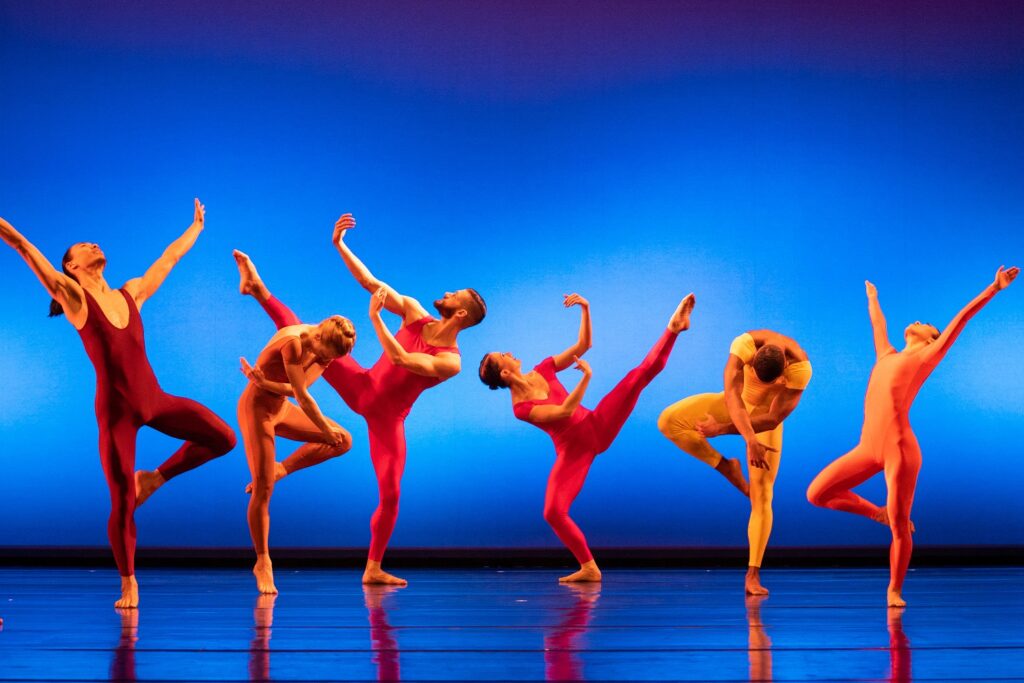
The Limón Dance Company in “A Choreograpic Offering” choreography by José Limón – Photo by Allison Armfield.
Intermission came and the Artistic Director, Dante Puleio, came to the stage and provided a context for the composition of the evening. Mr. Puleio, the 6th Artistic Director in the Company’s 80-year history, a former member of the Limón Dance Company for more than a decade and graduate of the MFA program at UC Irvine, has intentionally curated this evening’s program highlighting a series of quintessential works by Limón and Humphrey that is meant to celebrate Limón’s historical legacy while reimagining his intention and vision to reflect the 21st century landscape. As Puleio notes in the program, “This is a chance to showcase who José was through works that resonate deeply with their themes of love, loss, and the essence of the human condition.” His pride in and commitment to the company are palpable as he speaks to the audience.
The second act opened with a solo, Two Ecstatic Themes. It is the shortest piece of the evening and the only work of Doris Humphrey’s performed. The artist creates a very stark image on the barren stage with minimal lighting dressed in a long white dress as the dance opens. It is as if she is caressing the movement phrases that weave circular and spiral patterns. There is a flow to her movement that captures the feeling of an ocean wave and then angular arms that reach up and cut the body into sharp shapes. In the program notes the work is described as “representing the two inseparable elements of life as well as design” and as I watched I found myself reflecting on the ups and downs and ins and outs of life.
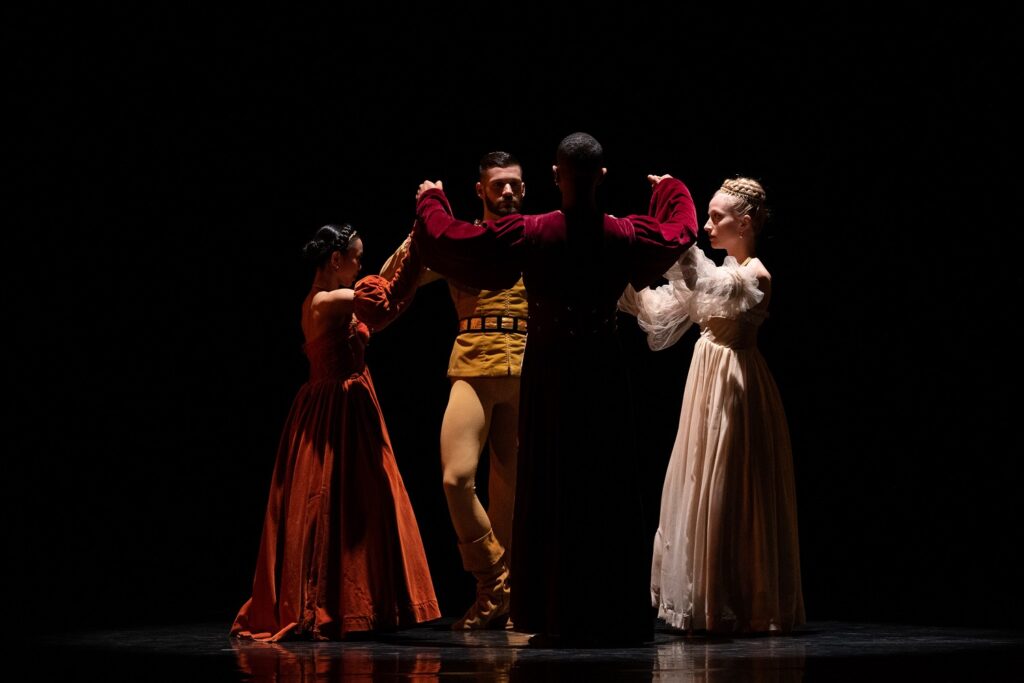
The Limón Dance Company in “The Moor’s Pavane” choreography by José Limón – Photo by Allison Armfield.
The Moor’s Pavane thrust me back to several months ago when I attended a Broadway performance of Othello starring Denzel Washington and Jake Gyllenhaal. From the moment the two men hit the stage the emotional energy was electric. From the opening of Limón’s Moor’s Pavane, the intense emotion and passion was palpable in much the same way as the Broadway production.
A pavane is defined in Webster’s Dictionary as a stately court dance by couples introduced from southern Europe into England in the 16th century. The elegant period costumes, quality of the movement, and stately carriage of the upper body even as they bowed or kneeled, captured the feeling of royalty. The ladies, Savannah Spratt (Emilia) and Mariah Gravelin (Desdemona) were absolutely stunning in lush, voluminous period costumes that they incorporated into their every move. There was a restraint in the way the two couples moved with rigid torsos and a grounded stability that created a feeling of royalty. The quartets also have a gentility and softness to them as the dancers smoothly whirl and twirl around one another. Curved arms stretch into curved bodies creating a continuous connection between the dancers.
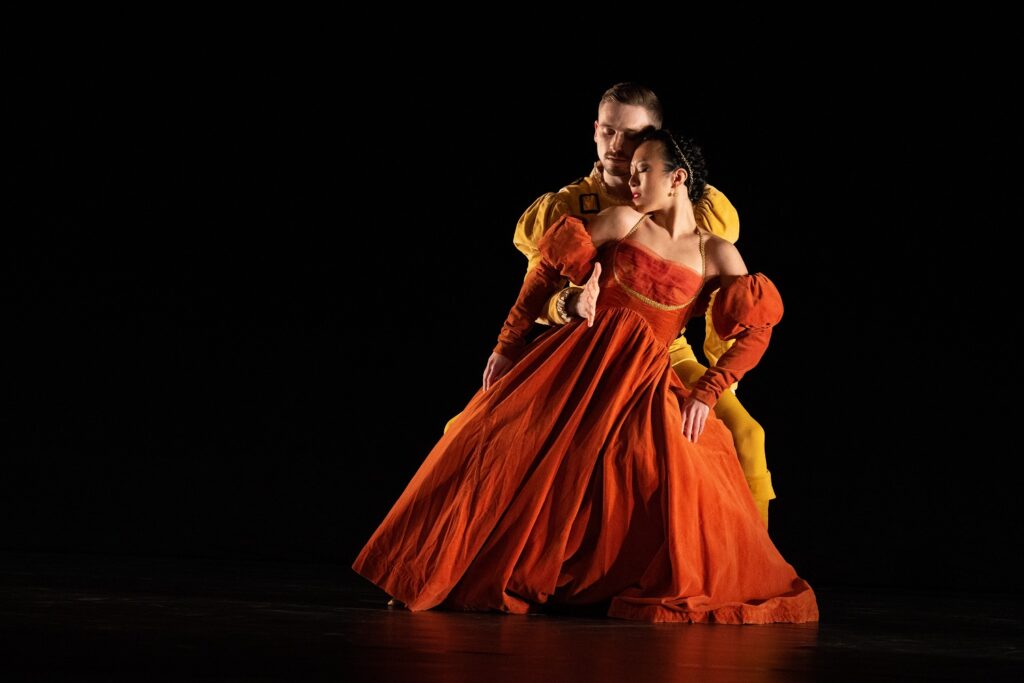
The Limón Dance Company in “The Moor’s Pavane” choreography by José Limón – Photo by Allison Armfield.
Tension fills the stage, movements became punctuated with gestures that that give meaning to arms and hands reaching up, reaching down and around, slicing the air ferociously. The group of four quickly became passionate duets. Desdemona and Othello embrace with an intensity that is palpable. Their hands, all the way to the tips of the fingers, reach with a longing and confusion that is frightening. Iago’s movement takes on a sinister snakelike quality created by his long lunges and deep plies in second position as he whispers to Othello. The duets featuring Iago and Othello are intense and aggressive characterized by pushing, pulling, grabbing, twisting and turning with hands that take on a menacing quality. The duets, Emilia and Iago, Desdemona and Emilia, Othello and Desdemona, provide insight into the relationships that drive this story. The story is told at a rapid pace, and the climax comes far quicker than the Broadway production but with no less intensity. Love, aggression, tenderness, intense anger, jealousy, intimacy, suspicion, betrayal, desperation, and profound grief drive the narrative. The dancers seem weightless as they kneel and rise effortlessly and then you see the sheer weight of grief and sadness that seems to pull them to the floor. The theatrical presentation and the concert dance presentation provide an emotional journey of extreme highs and lows. The dancers do not perform out to the audience. They engage with one another and clearly make eye contact. It is as if the audience members are voyeurs watching friends amid a complicated relationship that is characterized by confusion, turmoil, frustration, and pathos.
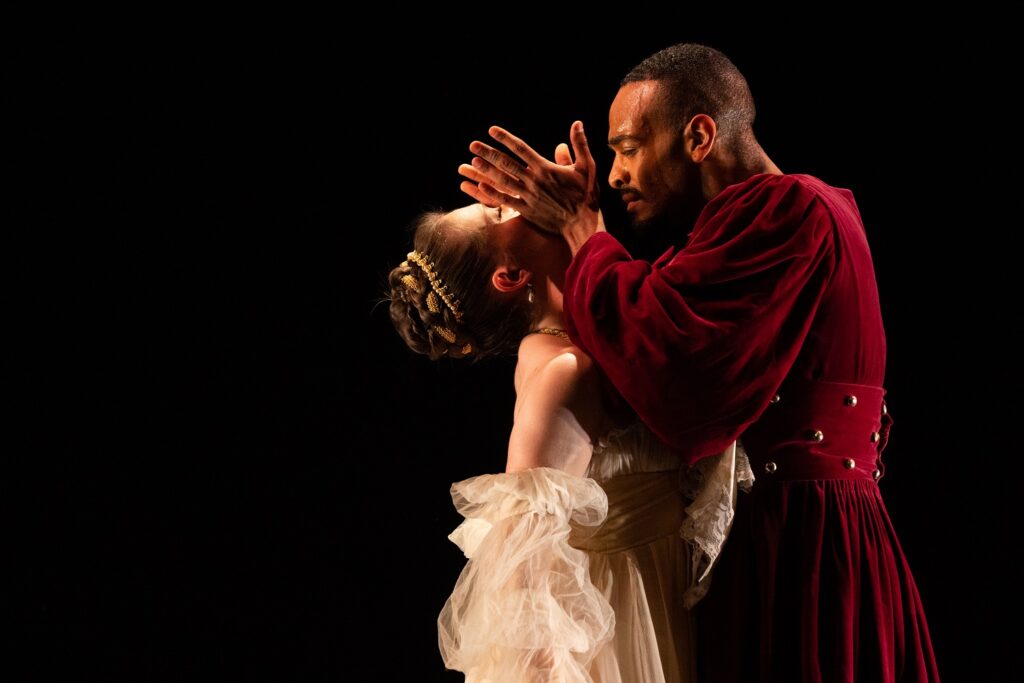
The Limón Dance Company in “The Moor’s Pavane” choreography by José Limón – Photo by Allison Armfield.
Curves and angles created by arms and bodies, nuances, a turn of the head, a look over the shoulder, the flick of a wrist, a cupped hand reminiscent of Graham technique, all worked together to tell a story of love, betrayal, and loss. The Moor (Othello), Johnson Guo and his friend (Iago), Joey Columbus attacked the movement with the same commitment and intention I saw in Mr. Washington and Mr. Gyllenhaal. We see the dancers as friends, lovers, and confidantes and then we watch the relationships drastically change. The story drives this ballet, and the dancers are exceptional in their ability to transform exceptional dance technique and choreography into the ultimate demonstration of Limón’s “story telling artistry”. It is apparent why The Moor’s Pavane is often referred to as José Limón’s “masterpiece.”
To learn more about the Limón Dance Company, please visit their website.
For more information about the Irvine Barclay Theatre, please visit their website.
Written by Leah Bass-Baylis for LA Dance Chronicle.
Featured image: The Limón Dance Company in “The Moor’s Pavane” choreography by José Limón – Photo by Allison Armfield.

